This post contains affiliate links.
It’s not difficult to see why hammock camping has become very popular among lightweight hikers and outdoor enthusiasts. Hammocks are lightweight, easy to set up, very comfortable, and versatile for any terrain. Many prefer it over tent camping.
How Do You Make Hammock Camping Comfortable?
- Camp during the warm months of the summer to avoid wide temperature swings.
- Use a rain fly that spans your entire hammock.
- Have a bug net with mesh fine enough to keep out bugs.
- Hang from trees with a proper separation between them.
- Hang at a 30 degree angle from tree to hammock.
- Tie drip loops on your line to prevent water from reaching your hammock.
- Layer your clothing.
- Keep 12-20 inches of space between your hammock and the ground.
- Use an underquilt to keep your bottom insulated.
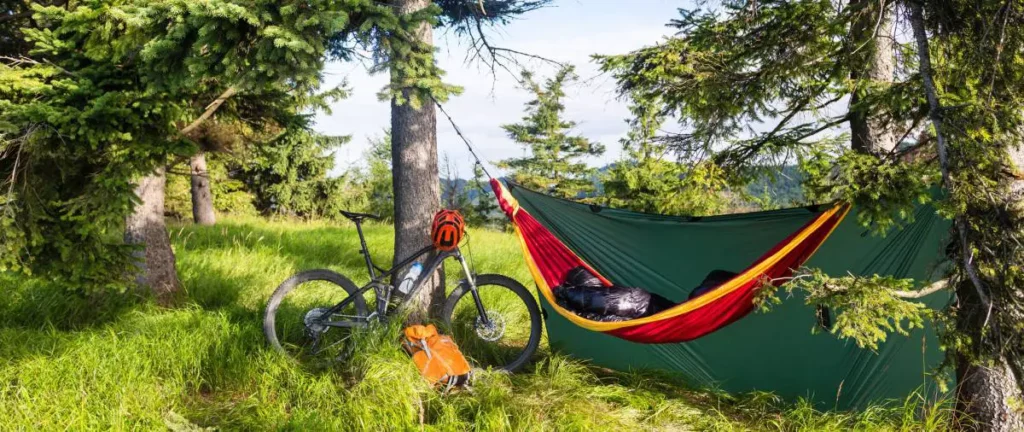
However, there can be a bit of a learning curve when making the transition from traditional tent camping to hammock camping, this causes some frustration for first timers. For that reason, we’re going to go over a number of tips that will help improve the comfort of your camping hammock and make the transition quicker and easier.
Table of Contents
The Hammock Styles
Ensuring a comfortable hammock camping experience begins with selecting a hammock that suits your needs. Hammocks are available in one, two and three-person sizes. They also come in traditional banana and also asymmetric shapes to add a little more space and variety to the options.
Hammocks are typically constructed of canvas, cotton, rope or netting but most camping hammocks are constructed using 70D ripstop nylon similar to what’s used in parachutes. Nylon is an extremely lightweight material that is also very strong. Nylon hammocks can pack down very small to fit in a backpack as well.
Invalid table id.Choose Your Season
If this is your first time attempting hammock camping, then you should consider camping during the warmer seasons so that you don’t have to go through extreme temperature drops at night.
Many hammock camping enthusiasts believe that it’s possible to camp in a hammock all year long. Though that’s definitely true, you’ll have a much more comfortable experience camping during seasons of fair weather like late spring through early fall.
Going hammock camping during the main months of the summer season will not only spare you the uncomfort of the cold weather, it will also help avoid the unbearable heat that can build up inside a tent. Because the hammock has airflow all around and a shade tarp over head, you have a lot more ability to adjust to the outside temperatures through layering of clothing and covers.
A Rain Fly
A rainfly is considered a hammock camping essential. A lot of hammocks come with a rain fly, or at least as an optional add on. If you’re still deciding on what hammock to buy don’t overlook the necessity of a rainfly or lightweight tarp.
A rain fly or tarp will be aligned either corner to corner or as an a-frame spanning the same trees as your hammock. It should cover the entire hammock and extend past your head and feet by a foot or two so that rain, snow, and wind don’t become a disturbance. The other two corners or sides will extend down to the ground at a 45 degree angle to provide shelter for your gear and to direct the water down to the ground.
A Bug Net
Bug nets are also essentials when it comes to hammock camping, especially if you’re camping in the early spring or summer when the bugs are at their worst. Many hammocks come with a bug net or at least offer an add on specific to your model. Don’t cheap out and neglect a bug net, you’ll quickly regret it.
If your hammock doesn’t have an integrated bug mesh you may want to consider a 360-degree bug net that wraps around your hammock completely. This style offers the greatest protection against insects and bugs from getting at you from the top and also attacking through the bottom of your hammock.
Bug netting is rated in holes per inch or holes per centimeter, the larger the number the smaller the holes will be. Pretty much any size net will keep mosquitos at bay but if you line in a place with no-see-ums or nats you may want to spend a few extra bucks and go for a very fine mesh.
Invalid table id.Finding Your Angles
When setting up your hammock, don’t just opt for any set of trees available. Make sure you pick trees that are the right distance apart from each other so that the hammock is stretched properly but still has some sag. The optimal strap angle from the tree (anchor point) to the hammock is 30 degrees, this is with your weight inside.
Ideally, you want to pick two trees or any other anchor points that are roughly 15 feet apart. The anchor points must be thick and strong enough to be able to support your weight but thin enough to get your strap around. Proper spacing will also allow your rain fly to stretch out tight helping to repel the rain and prevent it from drooping in your face.
The ground below your hammock should also be fairly level to make entering and exiting your hammock easy. Having 12-20 inches of distance between the bottom of your hammock and the ground is an ideal spacing.
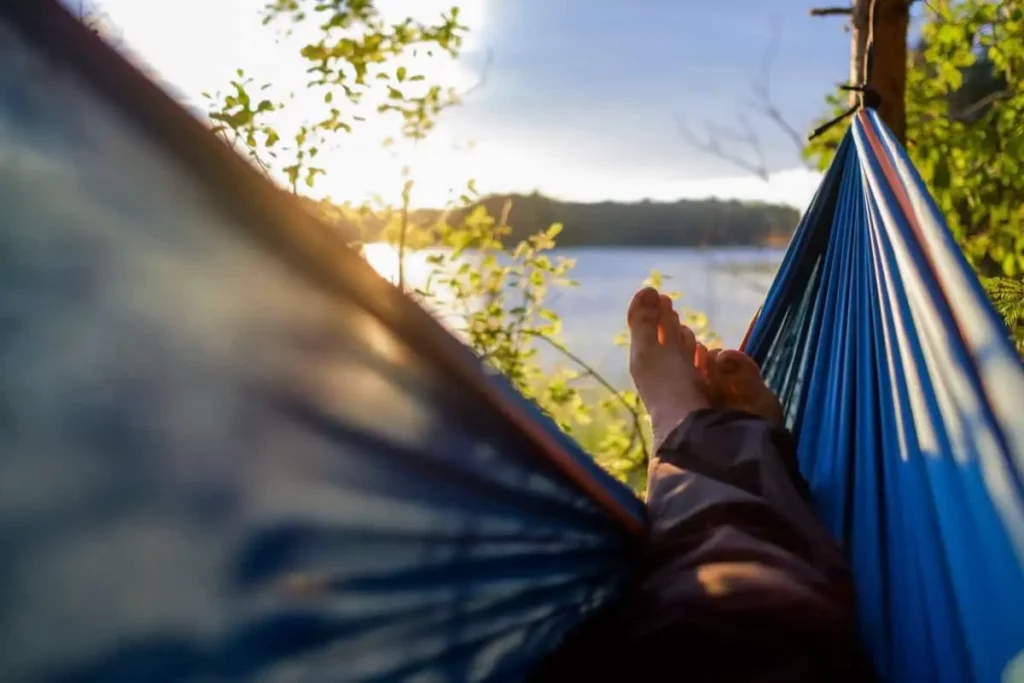
Lay In A Diagonal Position
Laying in a hammock for the first time requires some getting used to. Typically, you want to sleep on your back or either of your sides. You want to avoid sleeping on your stomach completely.
You can also add a pillow and blankets on your hammock to make it feel like a bed and to stay warm. Like we’ve just mentioned, it’ll take some shifting until you find the optimal position.
Surprising to most people, the proper way to lay in a hammock is not straight end to end, rather your feet and head should be on different sides of the center line by approximately a shoulder width. This should put you at a 20-30 degree angle off the center line and allow a more natural curve to your spine. Laying off of the center line will also reduce the claustrophobic feeling created by the sides of the hammock wrapping around you.
Asymmetrical hammocks like the Hennessy Hammock are designed to do this naturally however it isn’t hard to achieve in a traditional hammock design with a little practice. Taking this approach will improve the comfort of sleeping in a hammock dramatically.
Warming Your Backside
Whoever invented the term “freezing your butt off” must have been a hammock camper. Unlike sleeping in a tent on the ground, hammocks have no insulating barrier on the underside, this makes it imperative to plan ahead or freeze. There are a few different ways to tackle this issue all of which are a tradeoff between weight, cost and comfort.
Underquilt
The first option is what most hangers refer to as an underquilt. Like a snowsuit for your hammock, an underquilt is an insulation barrier that suspends beneath the bottom of your hammock to help retain heat and keep the cold wind out. The type of insulation varies between manufactures as well as the cost and thickness of the material. Underquilts are rated for different seasons and temperature ranges.
Top Quilt
A top quilt is a base layer of insulation that is placed inside your hammock that you lay on top of. They are typically thinner than a sleeping bag and offer a way to retain heat on your bottom side while still having flexibility of a different top layer.
Sleeping Bag
Mummy bags are some of the most comfortable sleeping bags for hammock camping. Not only that, but they provide a great deal of warmth that you can benefit from on a chilly night. The reason why mummy bags provide such great warmth is that they taper at the feet, which in turn results in maximum heat retention. The vast majority of mummy bags on the market feature hoods that you can simply scrunch up for added insulation around the head and neck areas.
Sleeping bags work well in the spring and fall but many hammock campers find they need more insulation on the bottom than on the top. A 60/40 split is often ideal. For this reason I carry a light sleeping bag and also a quilt or thin foam depending on the season.
Foam Mattress
Having a thin foam roll or self inflating mattress is another way to protect your backside from the cold. Just air alone won’t provide any insulation and anything too thick will become awkward in the hammock. Closed cell foam can be extremely lightweight but fairly bulky to pack. It does provide a good quality insulation for your underside.
Invalid table id.Layer Up Your Clothing
Since hammock camping doesn’t provide the ground insulation that tent camping does, it’s very important to bring along multiple layers of clothing for sleeping. In a hammock you’re very exposed to changes in the weather so be prepared to add or remove layers while sleeping.
Having warm socks, a base thermal layer, a breathable second layer and even a beanie or scarf for your head is a good idea. You may not need all of it every night but you’ll be happy it’s there when needed. Of course the clothing you require will be dependent on a number of factors including the season, elevation and humidity levels among others.
Use Drip Loops
Drip loops prevent rain and water from running down your hammock straps and getting you and your hammock wet. They can be created by tying small pieces of cord around your straps that hang down a few inches toward the ground. Even if you have a large rain fly overhead, water will still find a way to ruin a good night’s sleep in your hammock.
Let It Sag For Sitting
When sleeping in a hammock, you want to have a perfect angle for comfort, but when you’re merely trying to sit in the hammock and read a good book, it’s better to allow the hammock to sag a little extra.
For sitting, try to position your body perpendicularly to the hammock rather than horizontally so that one side offers upper body support while your feet drape off the other like a chair.
To get the best comfort during daytime sitting, adjust the hammock’s sag by clipping the carabiner down the loops of your tree straps. Move down the strap away from the tree to allow more sag and improve the comfort while sitting, return them back to the original loops when you’re ready to go to sleep.
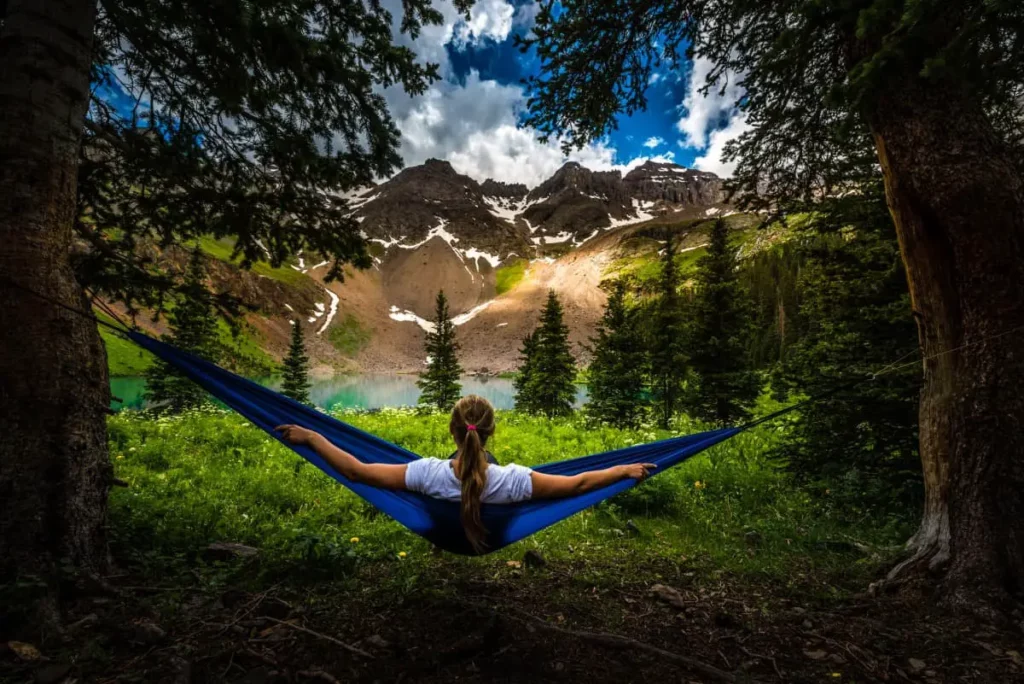
Choosing Tree Straps
When it comes to choosing straps to set up your hammock, you want to steer clear of simple cords or rope as they’re too thin and can cut into the bark of the trees causing unnecessary damage.
Instead, you want to invest in 1” or wider tree straps as they’ll do the best job of protecting the trees from damage and supporting your weight. The straps should have a sturdy loop at one end to allow the other end to circle the tree and easily feed through the loop.
Having daisy chain loops along the length of the strap will provide multiple connection points for a carabiner to clip on from your hammock. Your hammock straps should be at least 10’ long to provide plenty of length for different tree spacing.
There are plenty of straps on the market, but not all of them are built equal. You want to make sure that the straps are made from durable materials that can withstand at least double your weight as a pair. They should also have reinforced stitching to prevent failure leading to injury.
- #1 Hammock Tree Straps Set on Amazon: 12 Feet Long (24 Ft Total) x 1 Inch Wide (Tree Friendly), 20 Attachment Loops (40 Total), 1000+ Lbs...
- Fast & Easy To Hang Your Hammock: Setting up a hammock with MalloMe hammock hanging straps takes less than 1 minute! Setup and tear down is...
- Adjustable & No-Stretching For Comfort: Our daisy-chained loop system makes it easy to adjust the height of your hammock fast so that your...
Selecting Your Setup Location
The area you choose to set up your hammock will have a large bearing on your comfort throughout the night. Here are some tips to help you find the best location.
Overhead Dangers
Always avoid camping underneath dead trees or ones that have numerous loose or dead branches. They are often strong enough to support the weight of your hammock but pose a serious risk of dropping branches or limbs and injuring anyone below. These branches are known as widow makers for good reason.
Natural Barriers
Look for an area where the trees form some sort of wind block or there’s a natural shelter of rocks, boulders or thick foliage. This will provide shelter from the winds and help maintain a stable temperature.
Test And Inspect Your Gear
Hammock camping is exciting, especially for the first time. It’s tempting to jam your gear into your pack and head out on the trail to get the adventure started but it’s important to inspect and try out your gear first. It’s not uncommon to arrive at a campsite in the late evening and have to scramble to get set up before dark. Identifying the proper tree spacing can take some practice too.
Perform Regular Inspections
To avoid being caught unprepared to set up your hammock or worse find a defect with it, be sure to fully unpack and examine it thoroughly before your trip. take an account of all the pieces, inspect for tears and damage around the seams and connection points. Whether it’s new or you’ve used it before, be sure to inspect it’s condition before every trip.
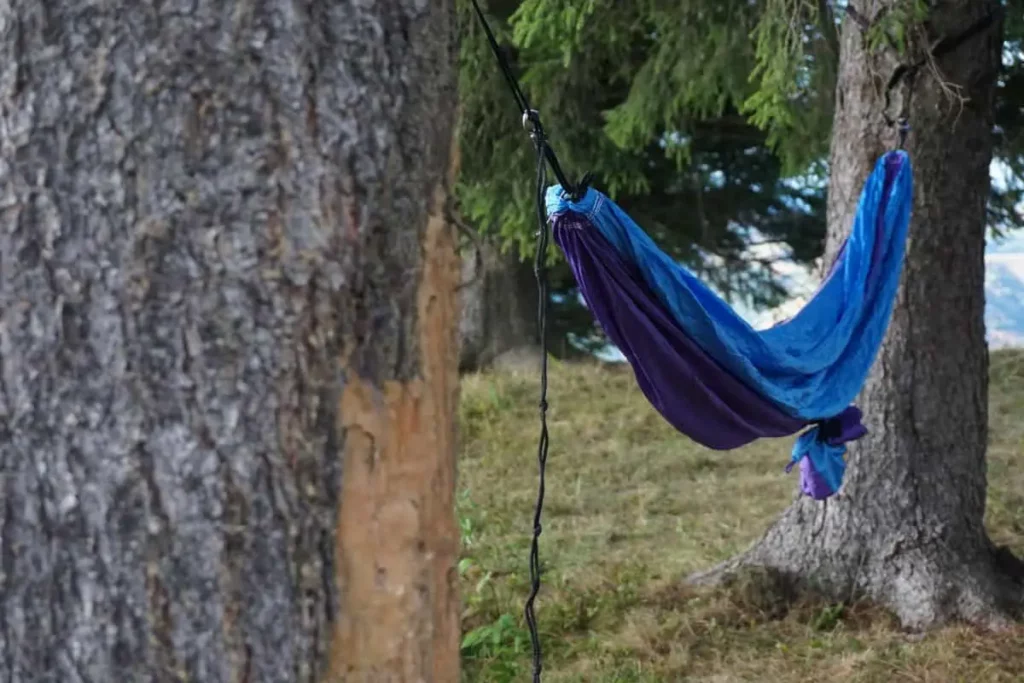
Practice Your Setup
Set up your hammock with the bug mesh and rain fly in your backyard, a local park or anywhere you can find sturdy supports. Go through the whole process a few times until you feel comfortable with it. At the same time note places where you can improve the process either by adding some carabiners, tying loops in the cords, or upgrading to better quality parts and accessories.
Put It To The Test
Most importantly, get in it. Lay in it with the straps adjusted to different tensions, lay at different angles, position it at different heights off the ground. Finding out what settings work best for you before you go on your camping adventure will greatly improve your comfort level all around.
Tips For Better Hammock Camping
There are many different opinions on the best ways to hammock camp but the trick is to find what works for you. After a few trips and trials of testing it out you’ll definitely fall in live with the simplicity of it. Anyone interested in hammock camping will also love our guide to The Best Minimalist Camping Gear.
Use A Guyline For Storage
Unlike tent camping, storage can be a problem while dispersed hammock camping in the wilderness. If you’re hammock camping with nothing but your equipment in your backpack, you’ll be in need of a guyline to keep your belongings off of the ground and away from insects and animals.
It doesn’t really matter whether you tie the guyline above or below the hammock just as long as it’s elevated high enough above the ground so your gear isn’t dragging and also kept under the protection of your rain fly. A guyline line will provide various attachment points for storage especially when combined with carabiners or hooks and loops on your gear.
No products found.
Pack Additional Carabiners
Carabiners are essentials of hammock camping as they provide a great deal of convenience in a lot of situations. You need to pack extra carabiners just in case the ones you’re using break.
Carabiners, just like paracord, are extremely versatile and can be used in a bunch of different ways. It all boils down to your creativity. This video points out the various uses of carabiners.
- Suitable for outdoor activities: camping, hiking, fishing, biking etc.
- Caution: It is not recommended to be used in mountaineering, rock climbing, ice climbing and high-altitude games for your safety.
- Nonlocking climbing carabiner Can be used as a replacement of high-intensity metal hook
Keep Your Hammock Clean
This is one of those things that a lot of hammock campers forget to do. Aside from the obvious, keeping your hammock clean will ensure durability, as dirt built-up can eat away at your material.
All you really have to do is remove the carabiners, put the hammock in a front-loading machine, add some mild detergent, wash it with cold water on a delicate cycle, and then line dry it.
Hammocks can be costly, so unless you don’t mind purchasing a new hammock every season, you’ll want to make sure to wash your hammock on a regular basis. Doing so will also remove any lingering campfire and dirty foot odors.
Another thing you want to do is remove the sticky sap that trees release when you wrap straps around them. This sticky substance can penetrate your straps if not removed quickly.
What you need to do in order to get rid of the sap is to use an alcohol-based product like hand sanitizer. It’s vital to apply the sanitizer generously. You want to work it in gently until the sap is removed.
Keep Your Kit Lightweight
The main reason why many outdoor fanatics are transitioning from tent camping to hammock camping is because of convenience, as hammocks can be lighter and easier to use. The caveat to this is that they require a few different pieces so be sure to leave room for the hammock, tarp and straps in your pack.
Bring Your Tent As Back-Up
If you’re interested in hammock camping, then you’re most likely experienced with tent camping, and you probably have a tent. Consider packing your tent for your first hammock excursion. It may also come in handy if you’re not familiar with the area and the type and size of trees that may be around.
Why bring your tent along? Sleeping in a hammock for the first time requires some getting used to. As mentioned, pulling off the correct hammock setup may need more than one attempt.
Packing a tent as backup is only advised if you’re able to access your campsite without too much effort. You don’t want to bring gear on a long expedition where weight and backpack space is at a premium. Whether you’re already a tent camper making the transition to hammock camping or completely new to the camping experience as a whole, consider packing a tent as a form of backup.
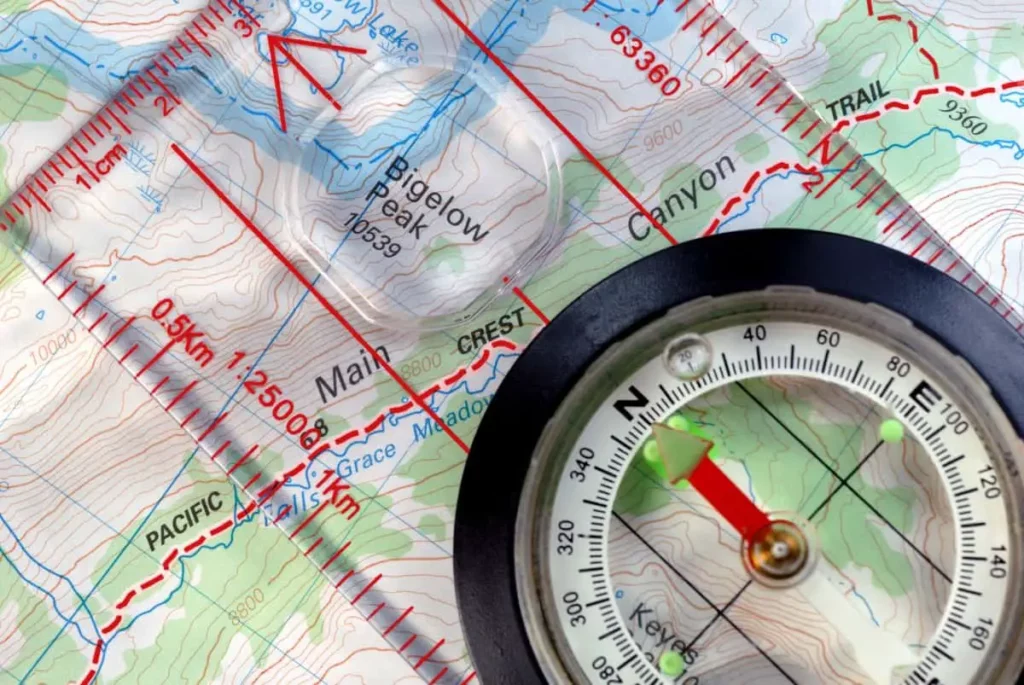
Plan Your Excursion Ahead
Before setting on any experience, old or new, you want to make sure you’re well prepared for it by planning ahead. You want to plan your camping trip at least a week ahead of time.
Make sure you have all the necessary gear you need for the trip. Also, make sure you stock up on food and supplies. Try formulating a checklist so that you don’t forget anything.
Final Thoughts
Hammock camping is a comfortable and fun way to camp if you’re prepared with the right skills and gear. Test out your setup before you hit the trails and try using some of the suggestions mentioned above to get the best experience out of your next camping adventure.


